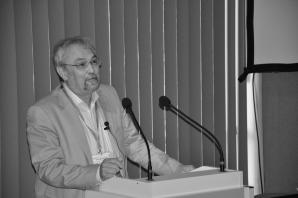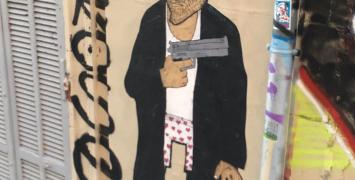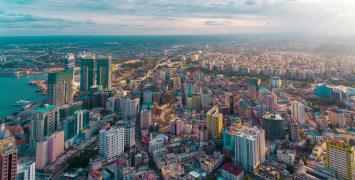Beneficial social relationships in an increasingly urbanised world
It feels as if humanity has never been more connected. We live in ever-expanding cities, stay in constant contact and even have online friendships with people we have never met. But have human social relationships really changed that much since we were hunter-gathers some 200 000 years ago? Are we suited to living in a world where everyone is apparently supposed to know everyone else? And most pressing of all, how can we achieve social cohesion at a time of great urbanisation and globalisation?

These are just some of the questions that Robin Dunbar, Professor of Evolutionary Psychology at Oxford University in the UK, has set out to answer. With the help of an ERC Advanced Grant, he intends to explore the processes that underpin social relationships, in order to find out whether the mechanisms involved in social cohesion can be extended to modern urbanised societies.
“This is probably the single most difficult issue that we currently face,” he says. “The world of living in small villages is, for the most part, gone. We have to deal with urbanisation, which is a recipe for social disengagement, and globalisation, where we lose our sense of being able to control things.”
This is no trivial matter because, by 2050, 80 % of the world’s population will be living in cities.
The magic number
Professor Dunbar is an expert in social evolution. In his search to discover what makes us human, and how we mentally shape the world around us, he has hypothesised a correlation between the size of primate social groups and the size of their brain’s neocortex. On this basis, back in 1992 he estimated that the ideal human group size should be around 150.
This number – which has become known as Dunbar’s number – has been cropping up ever since. “When we looked at communities across cultures, 150 consistently comes up as the ideal grouping,” he says.
The number of people you know socially is probably around 150 – if you have 1000 "friends" on Facebook you are probably self-aggrandising a little. Army companies usually comprise around 150 soldiers, and research suggests that businesses lose efficiency once they pass the 150-employee mark.
When a group grows larger than 150, its members appear to lose their sense of connection. This helps to explain why larger groups do not function without additional structures, such as hierarchies or laws to organise social relationships.
Professor Dunbar’s interest now is to investigate how the stresses and tensions between our natural community size, and the way in which modern society is structured, can be resolved. “The two key questions now are these: how do we manage this transition to large communities, and why have these transitions so far not been perfect?”
Achieving social cohesion
One of the issues his ERC-funded RELNET project will examine is kinship. “The cartoon explanation of this is that you’re sitting at a bar in Ibiza and you start talking to a guy. You find out he’s in the same tiddlywinks club as you, which is then the basis for a relationship. We have found that sharing interests is fundamental for friendship, in a way that being a friend-of-a-friend-of-a-friend is not. What is the psychology behind this?”
Prof. Dunbar intends to run neural activity tests to see if there is a sort of "shared interest" short cut in the brain.
The project would also like to follow an army officer corps training programme to see how a sense of commitment to a larger project is instilled, and also to compare the relationships in a remote community that has deep family roots with a similar community made up of newer arrivals: in the highlands and islands of north-west Scotland, for example.
The professor is also interested in the potential of social media to achieve some kind of breakthrough, although he feels the technology at present is too “clunky” and lacks that all-important aspect of human interaction: touch.
Ultimately, this project hopes to gain an understanding of how humans were able to build communities above the baseline of 150 in the first place. Figuring this out, says the professor, could allow us to live in communities of infinite size, from Neolithic hunter-gather villages of 150 up to the European Union as a new form of super-community. It would just be a question of understanding the process of scaling up.
At the same time, he stresses, we need to understand why such solutions have still not solved the essential disfunctionality that lies at the heart of contemporary urban society. “This will give us a chance to figure out how to cope with large-scale social cohesion,” he concludes. “If we don’t, then we could be in trouble.”






